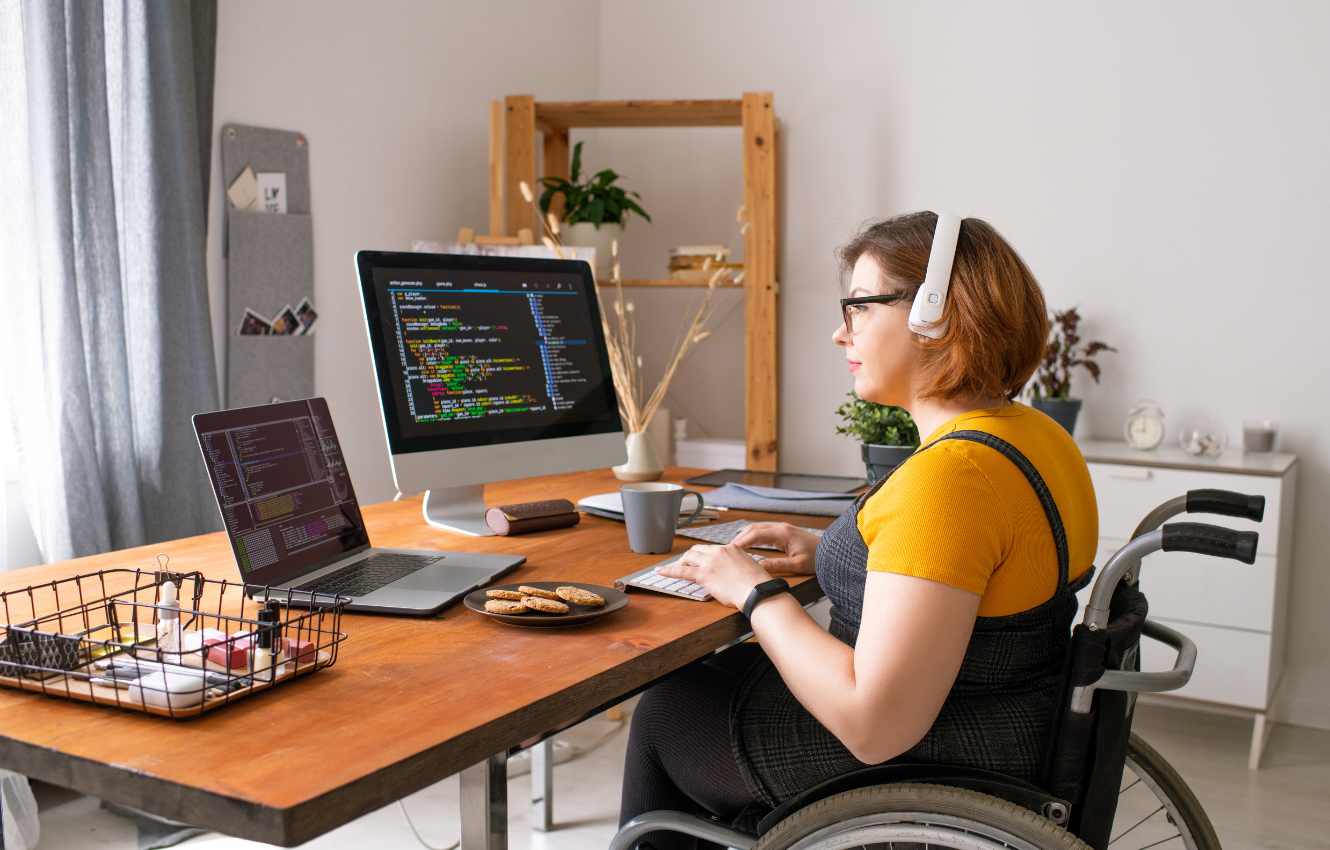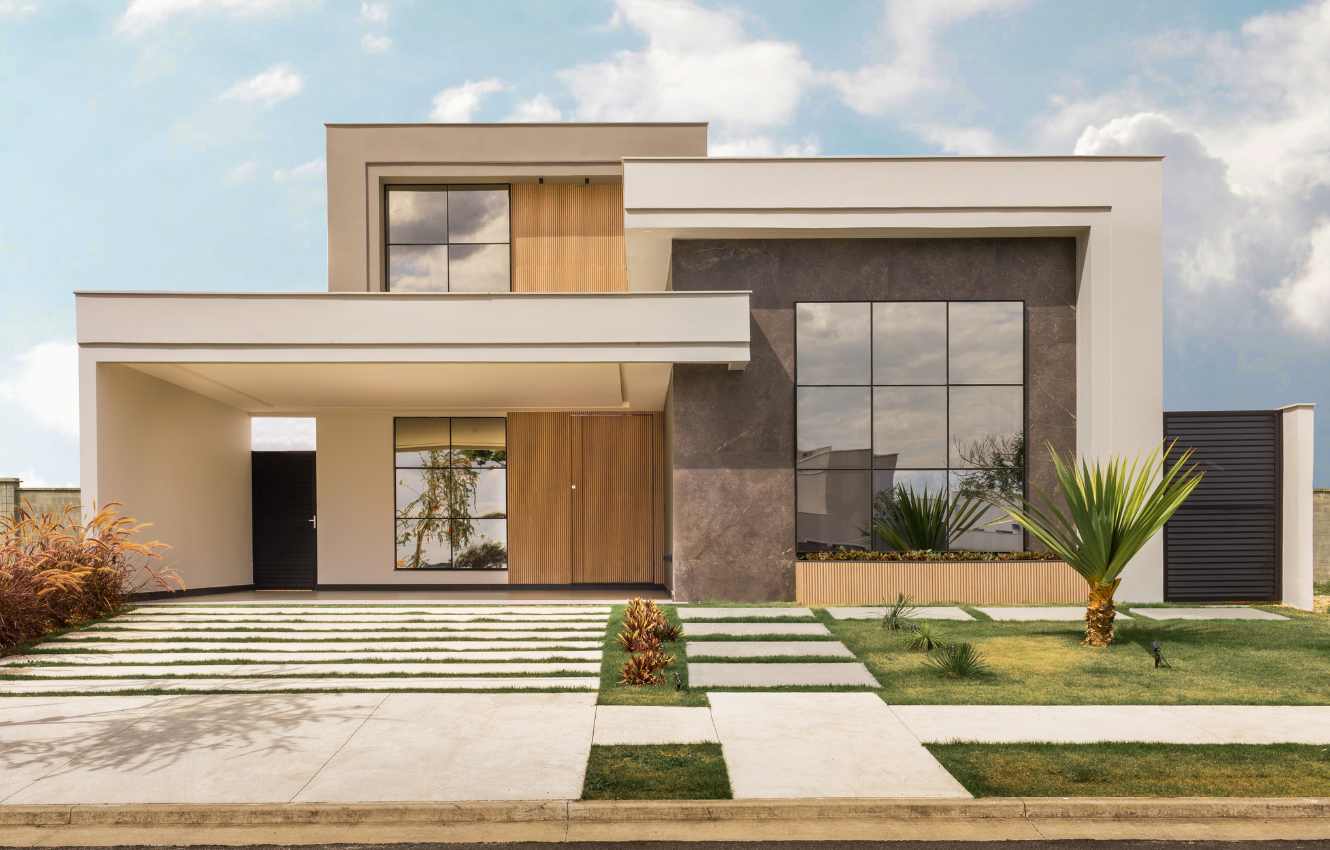Welcome to our article on inclusive design for all and its impact on accessibility and sustainability in building projects. As the world becomes more aware of the importance of creating spaces that cater to the diverse needs of individuals while also preserving the environment, inclusive design has become increasingly relevant.
Inclusive design is about creating spaces that are accessible to everyone, regardless of their physical ability, age, or background. It also involves incorporating eco-friendly practices into building projects to reduce carbon emissions and promote sustainable development goals.
Key Takeaways
- Inclusive design is essential for creating spaces that cater to the diverse needs of individuals
- Eco-friendly practices in construction contribute to sustainable development goals
Understanding Inclusive Design for All
Inclusive design is a concept that aims to create products, services, and environments that are accessible and usable by people of all abilities, ages, and backgrounds. The goal is to eliminate barriers and promote inclusivity, ensuring that everyone can participate in and benefit from the design.
Inclusive design principles are based on the idea of universal design, which asserts that design should cater to the widest possible audience, not just the majority. This means taking into account the diverse needs of individuals and creating solutions that work for everyone, regardless of their physical, cognitive, or sensory abilities.
| Key principles of inclusive design: |
Examples of inclusive design solutions: |
| Equitable use: design that is useful and marketable to people with diverse abilities |
Smartphone apps that include voice-activated assistants for people with mobility impairments |
| Flexibility in use: design that accommodates a wide range of preferences and abilities |
Accessible websites that allow users to adjust font sizes and contrast for better readability |
| Simple and intuitive use: design that is easy to understand, regardless of the user’s experience or knowledge |
Public transport systems with clear signage and announcements for people with visual or hearing impairments |
| Perceptible information: design that communicates necessary information to the user, regardless of their sensory abilities |
Building entrances with tactile paving for people with visual impairments |
| Tolerance for error: design that minimizes hazards and the consequences of accidental or unintended actions |
Medical devices with clear instructions and feedback to reduce user error |
| Low physical effort: design that minimizes physical effort and fatigue |
Kitchen tools with ergonomic handles for people with mobility impairments |
Inclusive design is not just a moral imperative; it also makes good business sense. By creating products and services that cater to a diverse audience, companies can increase their customer base and drive innovation. Inclusive design can also lead to cost savings by reducing the need for costly retrofits and adaptations.

Incorporating Inclusive Design in Building Projects
Implementing inclusive design practices in building projects is crucial to ensure that spaces are accessible to everyone, regardless of their abilities or disabilities. By adopting inclusive design principles, architects and designers can create environments that promote inclusivity, improve user experience, and contribute to sustainable development goals. However, incorporating inclusive design in building projects requires a collaborative effort between architects, designers, and accessibility experts.
Accessibility Guidelines and Regulations
Several accessibility guidelines and regulations need to be considered when planning and constructing a building project. The Disability Discrimination Act 1995 (DDA) and the Equality Act 2010 are some of the legal frameworks applicable in the UK. These regulations aim to eliminate discrimination against individuals with disabilities and provide guidelines for creating accessible spaces.
The UK government also provides guidelines on accessibility in building projects. The Building Regulations Approved Document M provides minimum standards for accessibility in new and refurbished buildings. The document covers aspects such as entrance facilities, toilet facilities, and circulation spaces.
Collaboration is Key
Collaboration between architects, designers, and accessibility experts is essential in ensuring that inclusive design principles are incorporated into building projects. Accessibility experts can provide valuable insights into the needs and challenges faced by individuals with disabilities. By working together, designers can create spaces that are not only accessible but also aesthetically pleasing and functional.
Designers should also consider the needs of different user groups, such as older people, pregnant women, and children. Incorporating universal design principles can help eliminate barriers and promote inclusivity for all individuals.

Enhancing User Experience through Inclusive Web Design
Inclusive web design goes beyond creating websites that are aesthetically appealing. It involves creating digital spaces that can be accessed by everyone, regardless of their ability or disability. With over 15% of the world’s population living with some form of disability, it’s crucial to ensure that websites are accessible to all.
Web accessibility guidelines have been put in place to ensure that people with disabilities can navigate websites with ease. Some of the guidelines include providing alternative text for images, using clear and logical headings, and ensuring that website content is keyboard navigable.
Using contrasting colours is also important, as it makes it easier for people with visual impairments to read the content on the website. Additionally, using descriptive link text and providing transcripts for videos and audio content can make websites more accessible.
By adopting inclusive web design practices, businesses can enhance user experience and expand their customer base. Creating accessible digital spaces is not only the right thing to do, but it’s also a smart business decision.

“We need to make every single thing accessible to every single person with a disability.”
– Stevie Wonder
The Benefits of Inclusive Design Practices
Implementing inclusive design practices in building projects can bring numerous benefits to both the users and the environment. Creating spaces that cater to the diverse needs of individuals can enhance user experience, improve productivity, and promote social inclusion.
Furthermore, inclusive design practices can contribute to sustainable development goals by minimizing the environmental impact of building projects. By adopting eco-friendly practices and materials, building projects can reduce energy consumption, decrease carbon emissions, and promote sustainable living.
Overall, incorporating inclusive design principles in building projects can lead to more accessible, sustainable, and inclusive spaces that benefit everyone.

“Inclusive design is not a trend or a fad; it is a necessity. Building projects that exclude certain individuals from accessing and using the space are not only discriminatory but also disregard the importance of social inclusion and environmental responsibility.”
By prioritizing inclusive design practices, architects, designers, and developers can create spaces that are accessible, sustainable, and inclusive for everyone. It is essential to collaborate with accessibility experts and prioritize inclusive design at every stage of the building project to ensure that the space is welcoming and functional for all individuals.
- Enhanced User Experience: Inclusive design can enhance user experience by creating spaces that are accessible and functional for everyone. By considering the diverse needs of individuals, inclusive design can provide a better user experience for all users.
- Improved Productivity: Inclusive design can improve productivity by creating spaces that are optimized for different tasks and abilities. By providing tools and resources that cater to individual needs, inclusive design can improve productivity and overall performance.
- Promoting Sustainable Development: Inclusive design can contribute to sustainable development goals by incorporating eco-friendly practices and materials. By reducing energy consumption and carbon emissions, building projects can promote sustainable living and contribute to a better future for all.
The Role of Inclusive Design in Sustainable Architecture
Inclusive design principles can be integrated into sustainable architecture for a more eco-friendly and inclusive approach to building projects. By considering the diverse needs of individuals, we can create spaces that are not only accessible but also sustainable and environmentally friendly.
For instance, incorporating green building technologies such as solar panels and rainwater harvesting systems can reduce a building’s carbon footprint while also making it more accessible to occupants. Additionally, including features such as natural lighting, appropriate acoustics, and proper ventilation can make a building more comfortable and accommodating for all users, regardless of ability.

Moreover, sustainable design can help to promote an inclusive and sustainable community. By creating buildings that are accessible and welcoming to all individuals, we can create a sense of belonging and reduce social and economic disparities. This, in turn, can help to build a stronger, more cohesive community that supports sustainable development.
In short, integrating inclusive design principles into sustainable architecture is not only beneficial for the environment but also for society as a whole. It can help to create a more inclusive, sustainable, and equitable future for all individuals.
Inclusive Website Development for All
Creating an accessible and inclusive digital experience is crucial in today’s world. Inclusive web design not only benefits individuals with disabilities but also improves the user experience for everyone. To achieve this, website developers must consider various accessibility guidelines and best practices.
One of the key considerations for inclusive website development is providing alternative text for images. This allows individuals with visual impairments to understand the content of an image through screen readers. Additionally, developers must ensure that all content is capable of being navigated using only a keyboard, as many individuals with disabilities rely on keyboard navigation.
Another important aspect of inclusive website development is designing with colour contrast in mind. This ensures that individuals with visual impairments or colour blindness can still easily read and understand the content on a website. A colour contrast checker can be used to ensure that text and background colours meet the necessary guidelines.
When developing websites, it’s essential to ensure that all multimedia components, such as videos and audio, include captions or transcripts. This enables individuals with hearing impairments to access and understand the content. It’s also important to incorporate readable fonts, proper spacing and layout, and minimal use of flashing or moving content, which can cause seizures in some individuals with epilepsy.
By implementing these best practices, website developers can create more inclusive digital experiences that cater to the diverse needs of all users. Inclusive website development is essential in ensuring that every individual has equal access to important information and resources online.

The Future of Inclusive Design
Inclusive design has come a long way in recent years and is set to become even more important in the future. As technology advances and the world becomes more interconnected, it is crucial that we continue to design spaces and digital experiences that are accessible to everyone.
One of the most exciting trends in the future of inclusive design is the use of artificial intelligence (AI). AI has the potential to revolutionize the way we approach accessibility. For example, AI-powered tools can automatically generate alt text for images, making it easier for visually impaired users to navigate websites.
Another emerging trend is the use of virtual and augmented reality (VR and AR) in inclusive design. These technologies can be used to create immersive experiences that cater to the needs of individuals with diverse abilities. For example, VR can be used to simulate environments for individuals with mobility impairments, allowing architects and designers to test and refine inclusive design features before construction begins.
As the world becomes more environmentally conscious, sustainability will also play a key role in the future of inclusive design. Building projects that prioritize energy efficiency and sustainable materials will not only benefit the environment, but also create more inclusive spaces that are accessible to everyone.
Overall, the future of inclusive design is bright. With the use of emerging technologies and a growing awareness of the importance of accessibility and sustainability, we can create a world that truly caters to the needs of all individuals. Let’s continue to push the boundaries of what is possible and make inclusive design a standard practice in all industries.

The Challenges of Implementing Inclusive Design Practices
While inclusive design has numerous benefits, there are still challenges to overcome. One of the biggest challenges is the lack of awareness and understanding of inclusive design principles. Many architects and designers are not aware of the diverse needs of individuals and how they can create spaces that cater to those needs.
Another challenge is the cost of implementing inclusive design practices. Some building projects may require significant alterations or additional features to meet accessibility guidelines, which can increase the cost of construction. However, it is important to note that the cost of not implementing inclusive design practices can be much higher in the long run.
The complexity of accessibility regulations and guidelines is another challenge. There are a lot of regulations and guidelines to keep in mind during the planning and construction phases, and it can be difficult to ensure that everything is being met. Collaboration between architects, designers, and accessibility experts can help overcome this challenge.
Additionally, sustainability and inclusive design are often viewed as separate concepts, making it challenging to integrate both into building projects. However, it is essential that we consider both sustainability and inclusivity in order to create eco-friendly and inclusive spaces.
Despite these challenges, it is important to push forward with inclusive design practices. By working together and increasing awareness and understanding of inclusivity, we can create spaces that are accessible to everyone and contribute to a more sustainable future.

Conclusion
Inclusive design is a crucial element in ensuring that building projects and digital experiences are accessible to all individuals, regardless of their abilities. By implementing inclusive design practices, we can create spaces that promote inclusivity, enhance user experience, and contribute to sustainable development goals. It is vital that architects, designers, and accessibility experts work together to ensure that accessibility guidelines and regulations are met during the planning and construction phases of a project.
Inclusive web design is also essential in creating user-friendly digital experiences that cater to individuals with disabilities. By adopting inclusive website development, we can ensure that everyone has equal access to information and services online.
The Future of Inclusive Design
The future of inclusive design is bright, with emerging technologies and trends that will shape the industry. It is essential that we embrace these changes to ensure that inclusive design becomes a standard practice in building projects and digital experiences. However, as with any new development, there will be challenges to overcome, and we must be prepared to face them head-on. By doing so, we can continue to promote inclusivity and sustainability in all aspects of design.
Overall, inclusive design is not only the right thing to do, but it is also good for business. By creating spaces and digital experiences that are accessible to everyone, we can enhance user experience, increase productivity, and contribute to a better world for all individuals.
FAQ
Q: What is inclusive design?
A: Inclusive design is an approach that aims to create spaces, products, and services that can be accessed and used by everyone, regardless of their age, ability, or background.
Q: Why is inclusive design important in building projects?
A: Inclusive design is important in building projects because it ensures that spaces are accessible to all individuals, regardless of their abilities. It promotes equal opportunities and inclusion for everyone, creating environments that cater to diverse needs.
Q: How can inclusive design be incorporated in building projects?
A: Inclusive design can be incorporated in building projects by following accessibility guidelines and regulations, considering the needs of individuals with disabilities, and collaborating with accessibility experts and professionals.
Q: What is the role of inclusive web design in enhancing user experience?
A: Inclusive web design plays a crucial role in enhancing user experience by ensuring that websites are accessible to individuals with disabilities. It allows everyone to navigate and interact with online platforms effectively.
Q: What are the benefits of adopting inclusive design practices?
A: Adopting inclusive design practices can enhance user experience, improve productivity, and contribute to sustainable development goals. It promotes inclusivity and accessibility for all individuals.
Q: How does inclusive design relate to sustainable architecture?
A: Inclusive design principles can be integrated into sustainable architecture to create environmentally friendly and inclusive spaces. It promotes sustainable development and access for all individuals.
Q: Why is inclusive website development important?
A: Inclusive website development is important for creating accessible and inclusive digital experiences for all users. It ensures equal access to information and online services.
Q: What does the future hold for inclusive design?
A: The future of inclusive design is promising, with emerging technologies and trends shaping its potential impact on various industries. It is expected to become a standard practice in creating inclusive and accessible environments.
Q: What are the challenges in implementing inclusive design practices?
A: Implementing inclusive design practices may face challenges such as lack of awareness, limited resources, and resistance to change. However, strategies can be employed to overcome these obstacles and ensure the successful integration of inclusive design in building projects.


























Post comments (0)